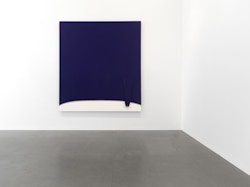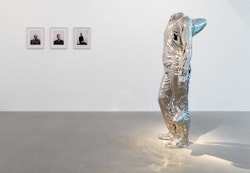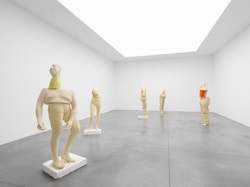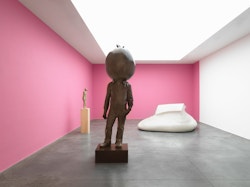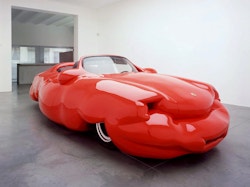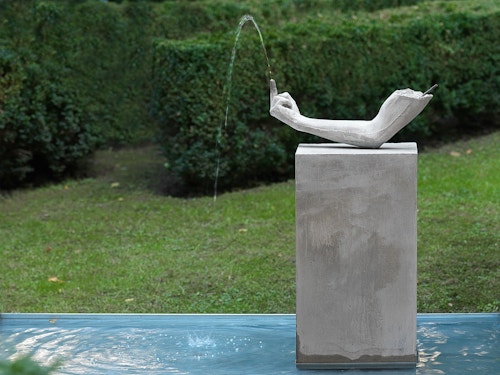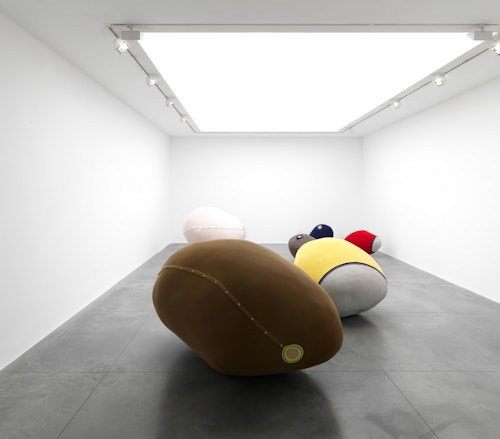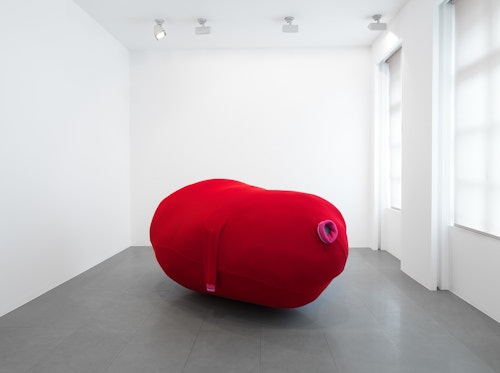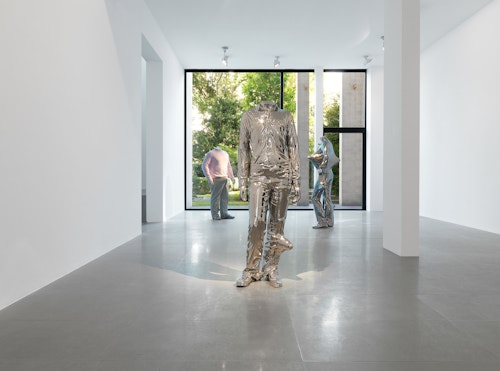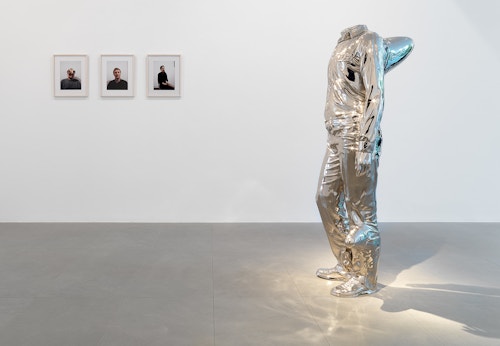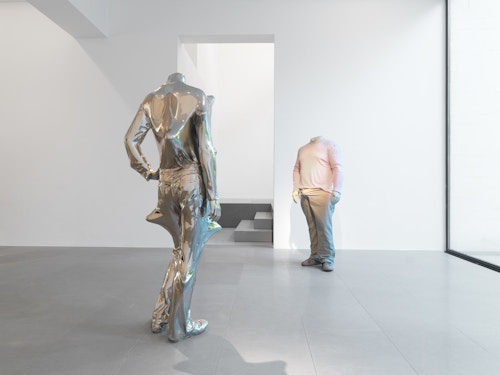
Erwin Wurm New Sculptures
The different groups of works by Erwin Wurm (° 1954, Vienna) are part of a large, ongoing research project concerning the true nature of sculpture, what defines and constitutes it, what minimum characteristics an object has to have in order to be considered a sculpture. Of equal interest to him is how art is woven into real life. Since the world for Wurm is “everything that is the case”, the artist remains compelled to devour as much of it is as possible in order to give shape to it. Everything that surrounds him can therefore be used in his art: materials, objects, topics involved in contemporary society, his own personal wishes and desires, humour,… the human body, which is not to be taken as an end on itself but rather as the whole entity of a human being including the physical, the spiritual, the psychological as well as the political.
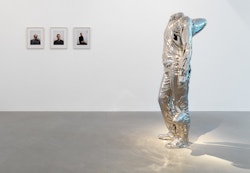
“New Sculptures”, Erwin Wurm’s second exhibition at the gallery, explores how the mind can physically change reality. “Transformation of the existing material world” versus “creation of a work of art” has always been an issue in his work. Following Wurm, the notion of the “material world” is only a construct, an agreed-upon representation, which needs to be distrusted. Especially in his latest works, he takes pleasure in setting playful traps for our sense of reality while not making the error of wanting to understand everything.
The sculptures “Anger Bumps” and “Envy Bumps” represent life size, headless human figures that have one or several, huge bumps sticking out of their body. In the reality of the English language you can get “green bumps” from envy, “goose bumps” from fear and anger; in French, someone irritating you “vous donne des boutons” and in Dutch you can “laugh yourself a bump”. In Wurm’s sculptures deeply emotional and psychological conditions are connected to the object of the human body. The artist asks if and how anger and envy can be a sculpture by looking for an immediate, physical result of the condition, a direct expression of the mind through the body. All three sculptures are dressed in clothes - one even with real garments - bringing with them the idea of temporality or temporariness. Without them, the works would too much look like statues, standing outside of time. With their shirts and trousers on, they are caught up in real life. The result is still monumental but has a twist. In addition, “Anger bumps” is cast in a gleaming, nickel plated bronze, which makes it act as a chameleon, a mirror in which every individual spectator is projected.
The 2 hand fountains in concrete focus on parts of the body which, in general, have no function in the other sculptures by Erwin Wurm, except for hanging along the body: the hand and the fingers. In both sculptures, hand and fingers make one, strong sign: the 2-finger “V-for-victory” sign and the extremely aggressive “giving one the finger”. The meaning of the signs is obvious and needs no further explanation. The material in which they are produced, the concrete, implicates the same directness and efficiency. The sign says it all. We can only imagine it to be followed by a real situation or by washing one’s hands in the sprouts of water coming out of the fountain’s fingertips.
With the “Mind Bubbles”, large potatoes wearing woollen pullovers, Erwin Wurm returns to the world of the comic-strip, another picture of reality he regularly explores. Finding surrealism too artificial and dramatic, he feels more attracted by the absurdity of the comics, its contradictions in scale and creations of fairytales. Wurm compares the potatoes to text bubbles that can take different shapes and be filled with many contents. According to their form, their colour, the sweaters they are wearing, they represent a certain philosophical moment, a psychological condition, a personality,… All of them are instantaneously convincing and provoke a direct enjoyment to the viewer.
Since the very beginning of his career, clothing, and sweaters in particular, have been an important part of Wurm’s experiments with sculpture. Not only as the representation of a person with his own personality, taste, background, ideas,… as is the case in the “Mind Bubbles”, but first of all in a formal sense: as a colour, a cover, a surface which could be compared to paint. The new 2 x 2 m canvases directly refer to his older experiments. They are two-dimensional works made with huge, coloured sweaters. Except for a single collar, sleeve or a range of buttons, they are completely abstract and only take the form of the flat frame around which they are stretched. Wurm clearly considers them as paintings, “painting as a dress”. Compared to the “Mind Bubbles” they are formless surfaces and reveal a spirit of emptiness.
The exhibition concludes with a series of photographs on the theme of “Hamlet”. In collaboration with the actors who performed the Shakespeare play at the Schauspielhaus Zurich last Spring, Wurm stages a number of “one minute sculptures” - his signature dynamic acts as sculptures - that address the most important issues of the tragedy: revenge, madness and the impossibility to act.
The art of Erwin Wurm has been the subject of many solo exhibitions at museums and galleries around the world, including, most recently, the Deichtorhallen in Hamburg, the Museum of Centemporary Art in Lyon, the Baltic Centre for Contemporary Art in Gateshead and the Museum Moderner Kunst Stiftung Ludwig in Vienna. At this moment, solo exhibitions by Wurm are held at the Domein Sittard, the Netherlands, and at the STUK in Leuven, Belgium. he german magazine Kunstjahr has recently chosen Erwin Wurm as the “artist of the year 2007”.




